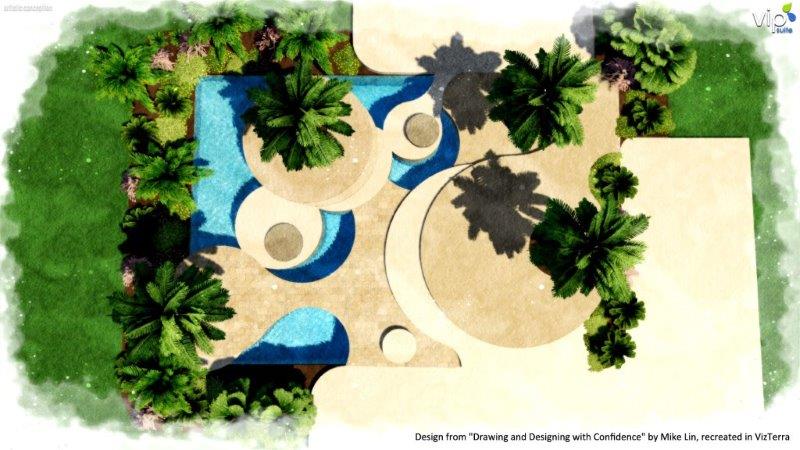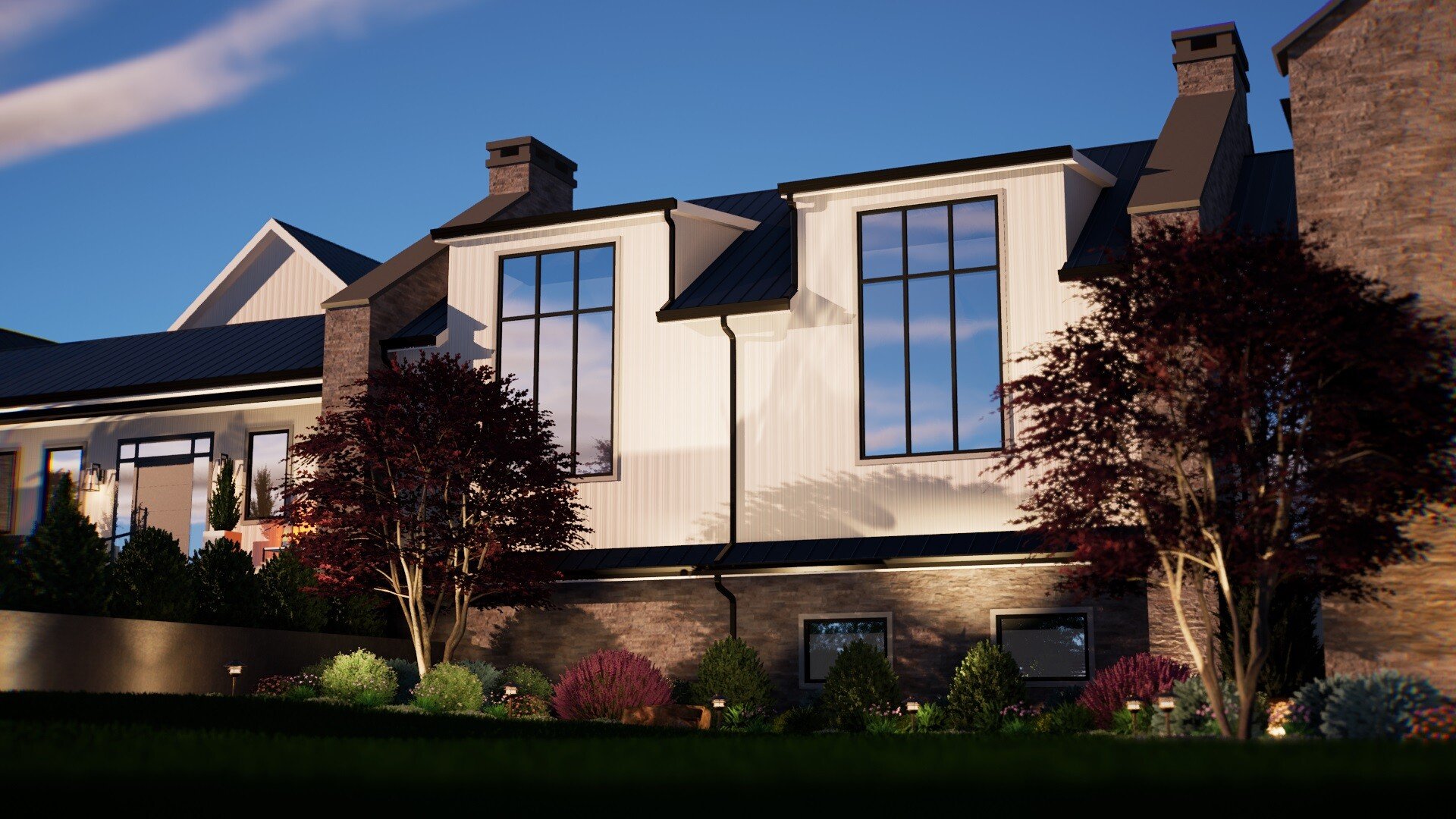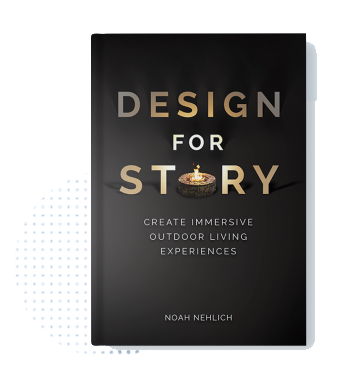Whether you are creating a design for a difficult terrain on a tight deadline or having trouble getting features to fit together, it can help to get back to the basics.
One way to do that in the early stages of the design development is by using form composition.
At a very basic level, form composition is nothing more than combining lines and arcs to form geometric shapes such as circles, squares and triangles.
Here’s how to use form composition in landscape design.
How and Why It Works
Form composition helps create a “visual theme,” according to “Residential Landscape Architecture: Design Process for the Private Residence” by Norman K. Booth and James E. Hiss. This theme gives a sense of consistency to the design because it repeats certain shapes.
There are several benefits to using form composition. Your clients may have a hard time figuring out whether a design will be functional, but most people instinctively react — almost instantly — to forms and shapes within a design, letting you know early on if you’re going in the right direction.
When creating form composition in landscape design, you’ll need to find the approach that will work best for the project.
Mike W. Lin offers up six types of layouts in his book “Drawing and Designing With Confidence: A Step-By-Step Guide.”
1. Curvilinear

Curvilinear is the most popular with landscape designers, even when another approach would work better.
Sometimes referred to as ‘natural,’ this is a mistake because curvilinear forms are created from an underlying geometry following very subtle guidelines.
When To Use: The approach is most appropriate for large, open sites where the large sweeping curves can lead the eye about the property. You can also use the approach for rolling terrain, where curves can help accommodate changes in grade.
2. Radial

To create a radial (or circular) theme, use concentric circles that radiate from a central point (and straight lines). Or, you can combine overlapping circles.
We rarely see the radial approach used in residential settings. When applied to residential sites, the home is typically of a contemporary style and is itself designed from a radial grid, at least part of it. The garden simply radiates from the central point of the home following the concentric patterns.
When To Use: It works best when there’s an underlying radial grid, instead of a square grid.
3. Rectilinear

With a rectilinear approach, you’ll create a plan-view using vertical and horizontal lines on a square grid – similar to how a home’s architecture is designed.
This approach is more orderly and logical, it suits formal architectural styles perfectly.
When To Use: It’s most appropriate for creating garden spaces, or rooms, that serve as an extension of the home, like with decks and patios. It’s also ideal for restrictive sites like city gardens that are enclosed by fences and walls. This approach works best with level ground, although you can terrace slopes for an extraordinary effect.
4. Rectilinear-45

Known as the diagonal approach, rectilinear-45 is created by following the rectilinear approach, but only with diagonal lines – most commonly 45-degree lines, but 60-degree lines are acceptable.
These diagonal lines can make a space more dynamic and exciting, as well as make a space seem larger.
When To Use: It’s used on similar sites as the rectilinear, except it’s less with formal, traditional architecture. The approach works well with contemporary, modernist homes designed from similar diagonal lines.
5. Arc-and-Tangent

The arc-and-tangent method combines the four previous approaches.
We've seen this approach used successfully on large sites where larger and more numerous arcs are introduced as the garden moves away from the home toward a woodland or open field.
When To Use: It can be used with a variety of sites and architectural styles.
6. Irregular

The irregular theme combines multidirectional lines on a square grid but isn’t restrictive to 45- or 60-degree lines.
This approach can make for a very bold and complex space.
When To Use: The approach isn’t common on residential sites, but it sometimes works with contemporary-style homes.
Best Practices
No matter which method you go with, there are common guidelines to follow when you use form composition in landscape design. Here are four from Booth and Hiss:
Align component parts. For example, a triangle in the design could also be a side of a rectangle form.
Avoid acute angles. Angles with less than 45 degrees create weak relationships between forms, waste space and are often too small for plants to grow.
Establish form identity. The individual shapes should be identifiable as distinct forms within the composition.
Form domination. Create a visual accent that draws someone’s attention.
What's the Next Level of Form Composition in Landscape Design?
Form composition can be a good method to use early in the design process. Once you’ve created that foundation for your project, you can add on to it using landscape design software like Structure Studios’ VizTerra or Pool Studio.
Images were adapted from Mike Lin's book, Drawing and Designing with Confidence. Be sure to visit Mike's community of design professionals at BeLoose Graphic Workshop.




 May 9, 2015
May 9, 2015






Comments